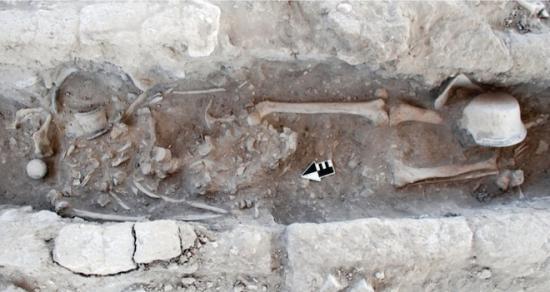Decline of an Empire Seen in Zapotec Thighbones
Brandon Keim
Source - http://www.wired.com/wiredscience/2011/01/zapotec-thighbones/

A newly excavated Zapotec burial site has yielded a fresh interpretation of the ancient, grisly Mesoamerican custom of removing thighbones from the dead.
Across pre-Hispanic Mesoamerica, femurs were believed to contain an individual’s power. Aztecs treated them as war trophies, while Zapotec royalty are thought to have used them like sceptres, as symbols of ancestral political might.
The new excavation, in a relatively humble residential dwelling in the ancient city of Mitla, suggests that ancestral thighbone-wielding “may not have been a practice limited to rulers,” wrote researchers led by Field Museum archaeologist Gary Feinman in a study published in December in Antiquity.
Thighbone customs of the Zapotec civilization, which reigned from the late 6th century BC to the early 16th century in what is now the Oaxaca valley of Mexico, are best known from a pair of burial sites.
The first, a 16th-century tomb in the city of Monte Alban that was excavated in the 1930s, yielded the remains of nine individuals, along with three extra femurs. These had been cut and painted, suggesting Aztec-style trophy use.
In the 1970s, another 16th-century tomb was excavated, this time in the smaller city of Lambityeco. It was part of a palatial residence, clearly occupied by rulers, six of whom had been buried there — but only three of their thighbones remained. The rest were missing.

Friezes on the wall depicted men holding what appeared to be femurs, giving rise to the interpretation of thighbones as scepters. Subsequent burial excavations have supported this hypothesis, but the sites have tended to be poorly preserved, with skeletons missing many bones.
The tomb excavated by Feinman at Mitla was extremely well-preserved, and had never been disturbed — except, that is, by someone who broke open the tomb, removed a thighbone, then carefully resealed it, leaving a bowl as an offering.
According to Feinman’s team, that offering suggests a veneration for the deceased. As the tomb was part of a residence — Zapotec dead were commonly buried in this fashion, with dwellings occupied for generations — it had likely been opened by a descendant.
Meanwhile, the upper portion of the skeleton was in slight disarray, while the lower portion was undisturbed except for the missing femur. The researchers interpret this as evidence of a generational gap. Whoever opened the tomb knew where it was, but not how it was aligned; they accidentally broke into the top part first, realized their mistake, then gently removed the thighbone.
The residence was located on a terraced hillside Mitla, part of a relatively nondescript neighborhood, well down from the dwellings of rulers at the top. It was, however, in the center of the neighborhood, atop a rocky promontory that would have made it an ideal lookout. The researchers think it belonged to someone like a ward boss, revered by his descendants.
To Feinman, the generational gap hinted at by this site, and the common dating of Zapotec thighbone customs to its Late Classic period, shortly before conquest by the Aztecs and then the Spanish, suggest the structure of society and tenor of life at the empire’s end.
As Zapotec power dwindled, so did its centralized authorities. Prominent local families gained power. This was rooted in personal and lineal networks, rather than in political tradition.
To demonstrate their legitimacy, families dug up their ancestors’ bones, and showed them off.
Images: 1) Burial site at Mitla, with arrow pointing to missing femur./Antiquity. 2) Frieze at Lambityeco depicting man holding a femur./Antiquity.